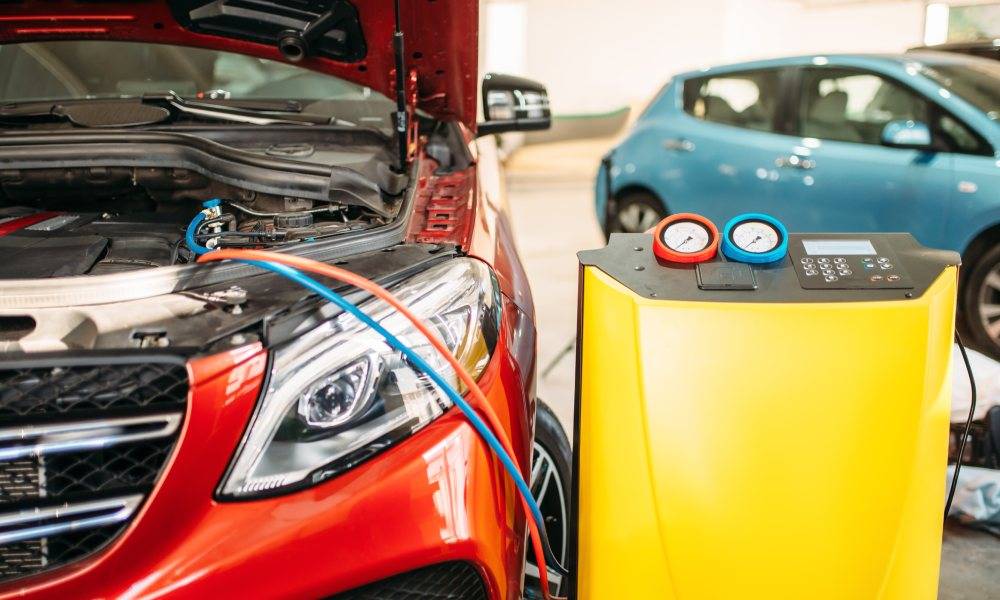Introduction to air conditioning in vehicles
Air conditioning in vehicles is essential for keeping the interior environment comfortable during hot weather. It works by removing heat and moisture from the inside of the vehicle, providing cool and dry air. The system uses a compressor to pressurize and circulate refrigerant, which absorbs the heat from the inside of the vehicle and releases it outside. This process creates a cooling effect inside the vehicle, making it more pleasant for passengers.
Importance of air conditioning
Air conditioning in vehicles is essential for keeping you comfortable while driving, especially during hot weather. It helps regulate the temperature inside your car, preventing you from feeling overheated and sweaty. Moreover, it plays a crucial role in ensuring your safety by helping you stay focused and alert while driving, as excessive heat can lead to fatigue and decreased concentration. Additionally, air conditioning can improve the air quality within the vehicle, reducing the likelihood of drowsiness and maintaining a pleasant environment for both the driver and passengers.
Components of air conditioning
The air conditioning unit in vehicles consists of several key components that work together to cool the air inside your car. These components include the compressor, condenser, evaporator, and expansion valve. The compressor pressurizes the refrigerant, the condenser removes heat from the refrigerant, the evaporator cools the air, and the expansion valve regulates the flow of refrigerant. All of these components work in sync to provide you with cool and comfortable air while driving.
How air conditioning works
Air conditioning in vehicles works by using a compressor to pressurize refrigerant gas, turning it into a high-pressure, high-temperature gas. This gas then flows through a condenser, where it is converted into a high-pressure liquid. The liquid then travels to the evaporator, where it expands and turns into a low-pressure gas. As this change occurs, the refrigerant absorbs heat, cooling the air inside the vehicle. The blower fan then circulates this cooled air throughout the cabin, providing a comfortable temperature for the passengers.
Common issues with air conditioning
Air conditioning in vehicles can experience common issues that can affect its functionality. Some of these issues include leaks in the system, inadequate cooling, weird noises, and unpleasant odors. Leaks in the system can lead to a decrease in cooling performance, while inadequate cooling can be caused by low refrigerant levels or a faulty compressor. Weird noises may indicate a problem with the fan or the motor, and unpleasant odors could be a sign of mold or bacterial growth within the system. Regular maintenance and timely repairs can help address these issues and ensure the proper functioning of your vehicle’s air conditioning system.
DIY maintenance tips for air conditioning
Maintaining your vehicle’s air conditioning can save you money and keep you comfortable during hot days. Here are some DIY maintenance tips that can help you keep your air conditioning in good condition:
- Clean the air filters regularly to ensure proper airflow.
- Check the refrigerant levels and top up if necessary.
- Inspect the condenser and evaporator for any debris or clogs.
- Test the blower motor to ensure it is working effectively.
- Consider hiring a professional for more complex maintenance tasks.
Signs that air conditioning needs repair
If your car’s air conditioning is blowing warm air, making strange noises, or giving off a strange smell, those are clear signs that your air conditioning needs repair. Other signs may include reduced airflow or water pooling on the floor of your vehicle when the air conditioning is in use. If you notice any of these symptoms, it’s important to have your air conditioning system checked by a professional as soon as possible to avoid further damage.
Professional repair and maintenance of air conditioning
Before any issues arise, a good rule of thumb is to have your vehicle’s air conditioning system inspected and serviced by a certified technician at least once a year. Regular maintenance can help identify and address potential problems before they become major issues. Issues with air conditioning can be caused by various factors, such as leaks, worn-out components, or electrical faults. Professional repair and maintenance include checking for leaks, replacing refrigerant, inspecting and replacing worn-out components, and testing for proper operation. A certified technician can diagnose any issues and perform necessary repairs to ensure your air conditioning system functions optimally, keeping you comfortable during your travels.
Eco-friendly options for air conditioning
Eco-friendly options for air conditioning include using refrigerants with a lower global warming potential (GWP) and energy-efficient systems. Some potential options for eco-friendly air conditioning systems include:
- Using refrigerants with a lower global warming potential (GWP)
- Investing in energy-efficient air conditioning systems
- Exploring alternative cooling technologies such as thermoelectric air conditioning
Conclusion and summary
In conclusion, air conditioning in vehicles is a crucial component for maintaining a comfortable and safe driving environment, especially during hot weather. It is important to regularly maintain and service the air conditioning system to ensure optimal performance. Keep an eye out for signs of a malfunctioning system, such as weak airflow or strange odors, and address them promptly to avoid further damage. Understanding the functionality of the air conditioning system will help you make informed decisions about its maintenance and repair, ultimately contributing to a more pleasant driving experience.


Comments are closed